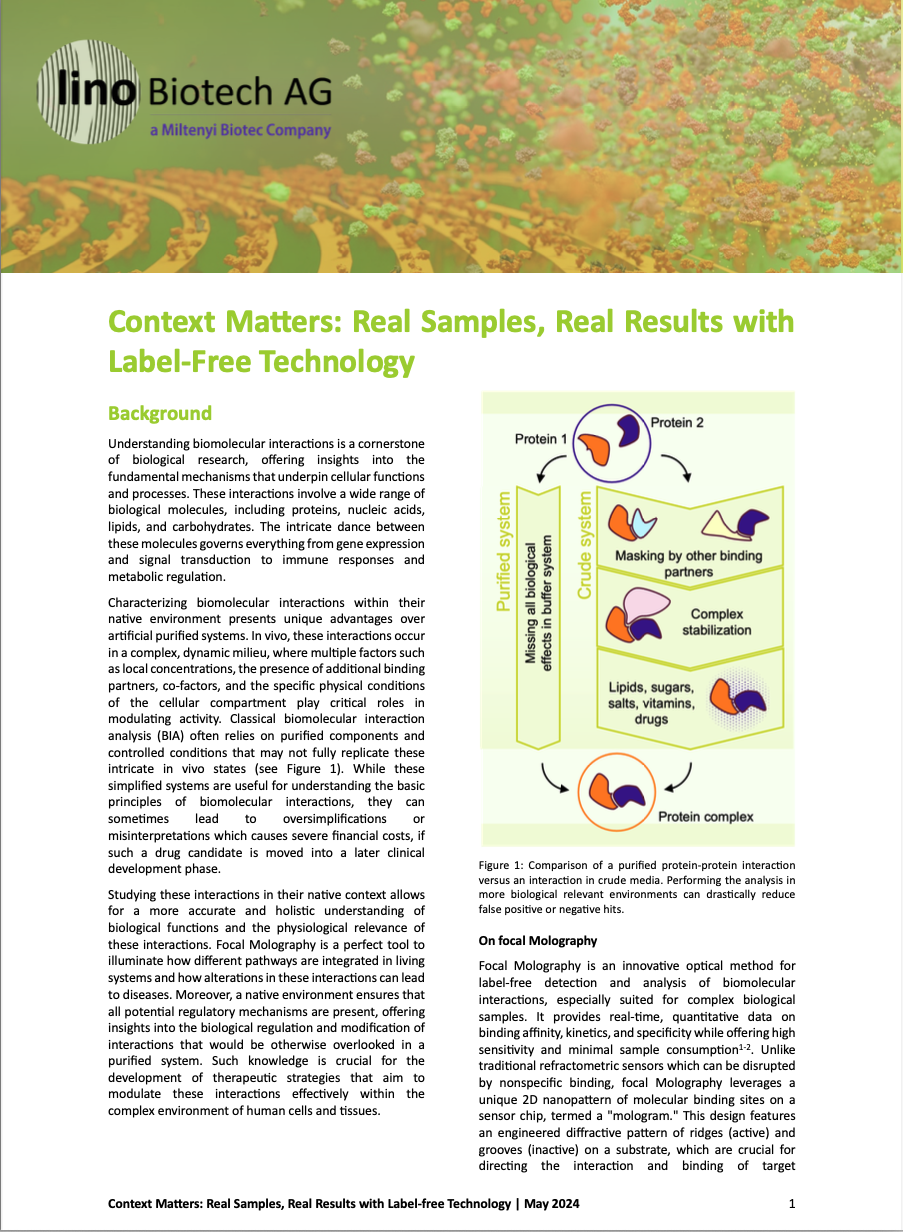Context Matters: Real Samples, Real Results with Label-Free Technology
Understanding biomolecular interactions is vital for biological research, revealing the core mechanisms behind cellular functions. These interactions, involving proteins, nucleic acids, lipids, and carbohydrates, are crucial for gene expression, signal transduction, immune responses, and metabolic regulation.
Analyzing these interactions in their natural environment offers significant benefits compared to artificial, purified systems. In vivo, they occur in a complex, dynamic setting influenced by various factors like local concentrations, additional binding partners, and specific physical conditions, which are essential for modulating activity. Traditional biomolecular interaction analysis, relying on purified components, often fails to capture these complex in vivo states, leading to potential misinterpretations and financial risks in drug development.
Studying interactions in their native context provides a comprehensive understanding of biological functions and their physiological relevance. Focal Molography helps explore how pathways integrate in living systems and how changes in these interactions can cause diseases. This approach ensures that all regulatory mechanisms are considered, offering deeper insights into biological regulation and interaction modification that could be missed in simplified systems. This knowledge is critical for developing therapies that effectively target these interactions in the complex human cellular and tissue environment.

